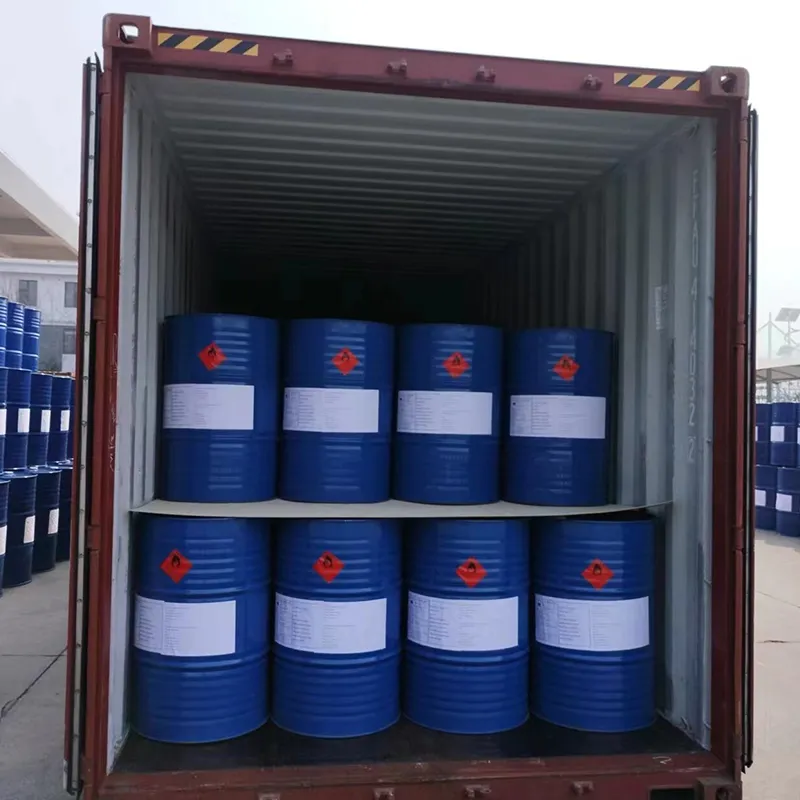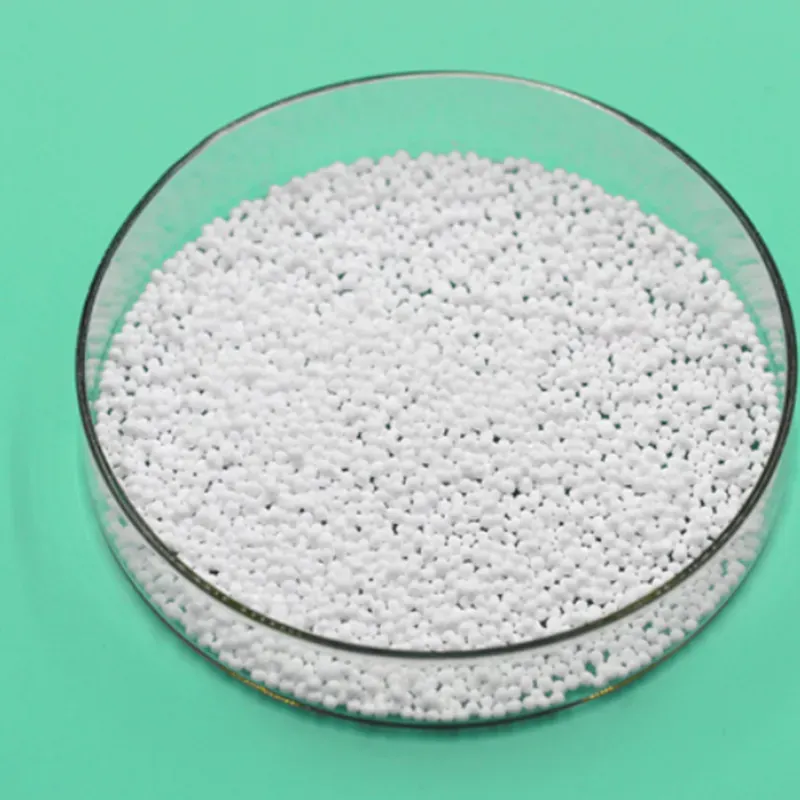
Green Solvents for Efficient SN2 Reactions Eco-Friendly Ionic & Polar Aprotic Solutions
- Introduction to green solvents
and their significance in modern chemistry - Technical characteristics and benefits of green solvents
- Comparative data: Green solvents vs. traditional solvents
- Analysis of leading manufacturers and their product offerings
- Custom solutions and adaptation for industry needs
- Real-world application case studies and performance metrics
- The future of green solvents in sustainable processes

(green solvents)
Understanding Green Solvents in Scientific Applications
The persistent challenge of environmental sustainability has driven the chemical industry to pursue alternatives to conventional solvents. Green solvents have emerged as vital components, significantly reducing ecological impact while maintaining the efficiency required in industrial and academic research. These substances, often derived from renewable resources or engineered to possess lower toxicity and volatility, have been at the forefront of innovation. Research from the American Chemical Society indicates that over 20% of solvent waste originates from pharmaceutical synthesis, highlighting a crucial target for green intervention. Notably, ionic solvents and polar aprotic solvents have gained popularity for enabling greener processes, particularly in SN2 reactions, where both environmental and operational benchmarks can be satisfied. The urgency for eco-friendly replacements is not merely regulatory, but results directly from market expectations and global legislative frameworks tightening acceptable emission levels.
Technical Advantages and Composition of Eco-Friendly Solvents
Green solvents distinguish themselves through a balance of performance and environmental compatibility. Among the leading technologies, ionic solvents stand out due to their non-volatile nature, thermal stability, and broad chemical tunability. For SN2 reactions, polar aprotic solvents such as dimethyl sulfoxide (DMSO) and acetonitrile enable efficient nucleophilic substitution because of their high dielectric constants and ability to stabilize ions without engaging in hydrogen bonding.
The U.S. Environmental Protection Agency classifies solvents based on metrics including toxicity, persistence, and potential for bioaccumulation. Green solvents consistently demonstrate reduced GHS hazard class ratings, with some ionic liquids displaying virtually no measurable vapor pressure, thereby minimizing worker exposure and atmospheric release. In laboratory-scale tests, using deep eutectic solvents reduced energy consumption during purification stages by up to 35% compared to dichloromethane, as reported in a 2023 Royal Society review. This leap forward translates directly into operational cost savings and improved compliance across multiple stages of production.
Comparative Data: Efficient Performance and Eco-Profile
Quantitative evaluation is essential for adoption. Below is a comparative table contrasting representative green solvents with traditional counterparts across several critical parameters:
| Solvent Type | Boiling Point (°C) | GHS Hazard Class | Volatility | Waste Generation Rate (kg/1000 L product) | Solubility Index (SN2 Rxn) | Renewable Source Avail. |
|---|---|---|---|---|---|---|
| Dimethyl Sulfoxide (DMSO) | 189 | Not classified | Very Low | 12 | High | Partial |
| [Bmim][BF4] (Ionic Liquid) | >250 | Not classified | Negligible | 6 | Excellent | No |
| Choline Chloride/Urea (Deep Eutectic) | NA (non-volatile) | Not classified | None | 5 | Good | Yes |
| Toluene (Traditional) | 110 | Toxic | High | 28 | Moderate | No |
| Dichloromethane (Traditional) | 40 | Harmful | Very High | 32 | High | No |
The table above demonstrates that green solvents like DMSO and deep eutectic solutions outperform traditional solvents in terms of hazard classification, volatility, and waste reduction, especially in typical SN2 reaction environments. Not only does this represent a compliance win, but it also shifts the economic equation in favor of sustainability.
Supplier Landscape: Leading Manufacturers Compared
The global green solvent market is shaped by both established chemical suppliers and emerging technology-focused startups. The annual market value is projected to exceed $10 billion by 2028, driven by increasing demand in pharmaceuticals, agrochemicals, and electronic manufacturing. Major industry players include BASF, Merck KGaA, and Ionic Liquids Technologies GmbH, each with distinctive portfolios and focus areas.
| Manufacturer | Flagship Green Product | Product Purity (%) | Custom Synthesis | Regulatory Compliance | Min. Order Quantity (kg) | Lead Time (weeks) |
|---|---|---|---|---|---|---|
| BASF | SoluProt® DMSO | 99.9 | Partial | REACH, EPA | 50 | 2 |
| Merck KGaA | Zeta Ionic Series | 98.5 | Yes | REACH, FDA | 1 | 1 |
| Ionic Liquids Technologies GmbH | Bmim-based Ionic Liquids | 99.5 | Extensive | REACH | 0.5 | 3 |
| DeepGreen Chemicals | Natural Deep Eutectic | 97.0 | Full | EPA | 10 | 2 |
Product diversity, regulatory registrations, and the ability to deliver custom blends remain key differentiators. Manufacturers’ capacity to develop tailored solutions for nuanced industry requirements is setting new benchmarks for market competition.
Tailoring Custom Green Solvent Solutions for Industry
Off-the-shelf green solvent options often require adaptation to meet the complex needs of advanced synthetic processes. For pharmaceutical manufacturing, attributes such as ultra-low residual toxicity and compatibility with existing purification systems are critical. Customized ionic solvents have been engineered to optimize reaction kinetics while simplifying downstream recovery.
According to a survey conducted by Chemical Market Analytics (2023), 62% of buyers now mandate supplier capabilities for custom solvent formulation as part of their procurement process. This demand has led to development cycles where end-users co-design solvent properties, from viscosity to functional group compatibility. In the energy sector, deep eutectic solvents tailored for selective metal extraction improve process selectivity by over 40% compared to generic alternatives.
Emerging platforms are also leveraging smart data tools, enabling rapid solvent prototyping aligned to customer-specific parameters. This approach accelerates project timelines and extends the lifecycle of critical production assets.
Application Case Studies: Demonstrating Value in Real-World Scenarios
Illustrative adoption cases from diverse industries underline the broad accessibility and tangible benefits of these technologies.
- Pharmaceutical Synthesis: A mid-scale biotech company replaced acetonitrile with a custom deep eutectic solvent in SN2-driven active ingredient manufacturing. This switch reduced hazardous waste by 55%, cut solvent costs by 30%, and shortened purification by two process steps.
- Batteries and Electronics: Leading lithium-ion battery manufacturers deployed ionic liquids in solvent exchange and coating steps, achieving defect rates 25% lower than processes using traditional organics, while significantly reducing workplace solvent vapour exposure.
- Agrochemicals: A multinational agrochemical producer utilized glycerol-derived green solvents for imidazoline synthesis, yielding improved crop uptake and compliance with Australia’s APVMA guidelines, without sacrificing reaction speed.
- Petrochemical Refining: A refinery successfully replaced toluene in desulfurization with a renewable choline chloride/urea mixture. Operational downtime was reduced by 16%, and compliance with sulfur emission norms improved substantially.
Across applications, transition to green solvents has consistently produced enhanced process reliability, measurable reductions in environmental footprint, and favorable ROI within the first two years of deployment.
The Future of Green Solvents in Sustainable Process Transformation
As industrial decarbonization and sustainable practice targets become more ambitious, green solvents are central to achieving compliance and operational efficiency. The maturation of custom synthesis capabilities and scalable production technologies signals a promising trajectory for broader market penetration. Market forecasts suggest an annual growth rate exceeding 7% in green solvent adoption sectors between now and 2030. Policymakers are increasingly recognizing solvent selection as a high-impact lever for cleaner manufacturing, spurring further investments in research and infrastructure.
The synergy between environmental stewardship and profitability, coupled with the continuous advance of ionic solvents and polar aprotic solvents for high-value SN2 transformations, ensures that green solutions will play a defining role in the next chapter of process chemistry. Companies equipped to navigate technical, regulatory, and application complexity will be best positioned to leverage the opportunities presented by the new green chemistry paradigm.

(green solvents)
FAQS on green solvents
Q: What are green solvents?
A: Green solvents are environmentally friendly alternatives to traditional organic solvents, reducing toxicity and environmental impact. They are often derived from renewable sources. Their use supports sustainable chemistry.Q: How are ionic solvents related to green chemistry?
A: Ionic solvents, like ionic liquids, are considered green solvents due to their low volatility and recyclability. They minimize air pollution compared to volatile organic solvents. Their stability makes them attractive in green chemistry applications.Q: Why are polar aprotic solvents important in SN2 reactions?
A: Polar aprotic solvents stabilize ions without hydrogen bonding to nucleophiles, aiding SN2 reactions. They increase nucleophilicity, promoting faster reaction rates. Common examples include DMSO and acetonitrile.Q: Are there green alternatives for traditional polar aprotic solvents in SN2 reactions?
A: Yes, researchers are developing green polar aprotic solvents, such as certain ionic liquids, to replace conventional options like DMF. These alternatives offer lower toxicity and better biodegradability. This aligns with the goals of green chemistry.Q: What are the environmental benefits of using green solvents in chemical processes?
A: Green solvents reduce hazardous waste and lower environmental pollution. They are often safer for workers and decrease the ecological footprint of processes. Their adoption is key for sustainable industry practices.-
What Is a Food Additive? Global Insights, Applications & Future TrendsNewsNov.24,2025
-
968 Sweetener: The Modern Solution for Health-Conscious SweeteningNewsNov.23,2025
-
Discover the Benefits and Uses of 965 Sweetener (Erythritol) | Tenger ChemicalNewsNov.23,2025
-
961 Sweetener - A Next-Gen Sugar Alternative for Health and IndustryNewsNov.23,2025
-
Understanding 960 Sweetener: The Modern Sugar Alternative for Health and IndustryNewsNov.22,2025
-
Everything You Need to Know About 955 950 Sweeteners – Benefits, Uses, and TrendsNewsNov.22,2025
-
953 Sweetener: Global Insights, Applications, and Future TrendsNewsNov.21,2025
Hebei Tenger Chemical Technology Co., Ltd. focuses on the chemical industry and is committed to the export service of chemical raw materials.
-

view more DiethanolisopropanolamineIn the ever-growing field of chemical solutions, diethanolisopropanolamine (DEIPA) stands out as a versatile and important compound. Due to its unique chemical structure and properties, DEIPA is of interest to various industries including construction, personal care, and agriculture. -

view more TriisopropanolamineTriisopropanolamine (TIPA) alkanol amine substance, is a kind of alcohol amine compound with amino and alcohol hydroxyl, and because of its molecules contains both amino and hydroxyl. -

view more Tetramethyl Thiuram DisulfideTetramethyl thiuram disulfide, also known as TMTD, is a white to light-yellow powder with a distinct sulfur-like odor. It is soluble in organic solvents such as benzene, acetone, and ethyl acetate, making it highly versatile for use in different formulations. TMTD is known for its excellent vulcanization acceleration properties, which makes it a key ingredient in the production of rubber products. Additionally, it acts as an effective fungicide and bactericide, making it valuable in agricultural applications. Its high purity and stability ensure consistent performance, making it a preferred choice for manufacturers across various industries.





